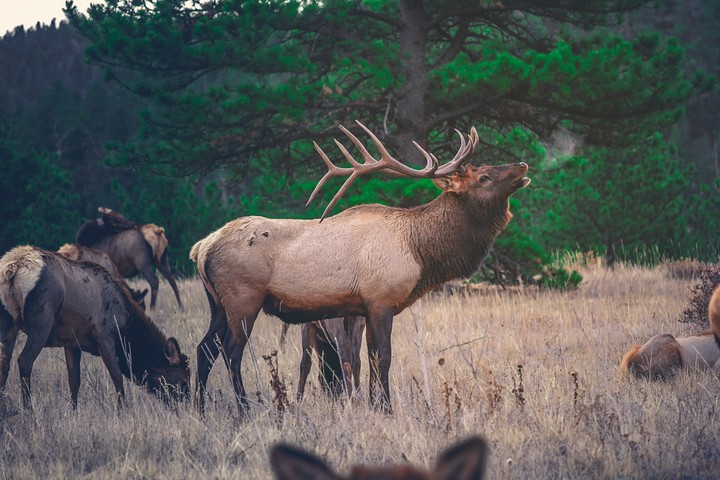 Image credit: Harry Collins Photography
Image credit: Harry Collins Photography
Abstract
Examining the ways in which animals use habitat and select resources to satisfy their life history requirements has important implications for ecology, evolution, and conservation.The advent of radio‐tracking in the mid‐20th century greatly expanded the scope of animal‐habitat modeling. Thereafter, it became common practice to aggregate telemetry data collected on a number of tagged individuals and fit one model describing resource selection at the population level. This convention, however, runs the risk of masking important individuality in the nature of associations between animals and their environment. Here, we investigated the importance of individual variation in animal‐habitat relationships via the study of a highly gregarious species. We modeled elk (Cervus) modeled elk (Cervus elaphus) location data, collected from Global Positioning System (GPS) collars, using Bayesian discrete choice resource selection function (RSF) models.Using a high‐performance computing cluster, we batch‐processed these models at the level of each individual elk (n = 88) and evaluated the ouput with respect: and evaluated the output with respect to: (a) the composition of parameters in the most supported models, (b) the estimates of the parameters featured in the global models, and (c) spatial maps of the predicted relative probabilities of use. We detected considerable individual variation across all three metrics. For instance, the most supported models varied with respect to parameter composition with a range of seven to 17 and an average of 14.4 parameters per individual elk. The estimates of the parameters featured in the global models also varied greatly across individual elk with little conformity detected across age or sex classes. Finally, spatial mapping illustrated stark differences in the predicted relative probabilities of use across individual elk. Our analysis identifies that animal‐habitat relationships, even among the most gregarious of species, can be highly variable. We discuss the implications of our results for ecology and present some guiding principles for the development of RSF models at the individual‐animal level.